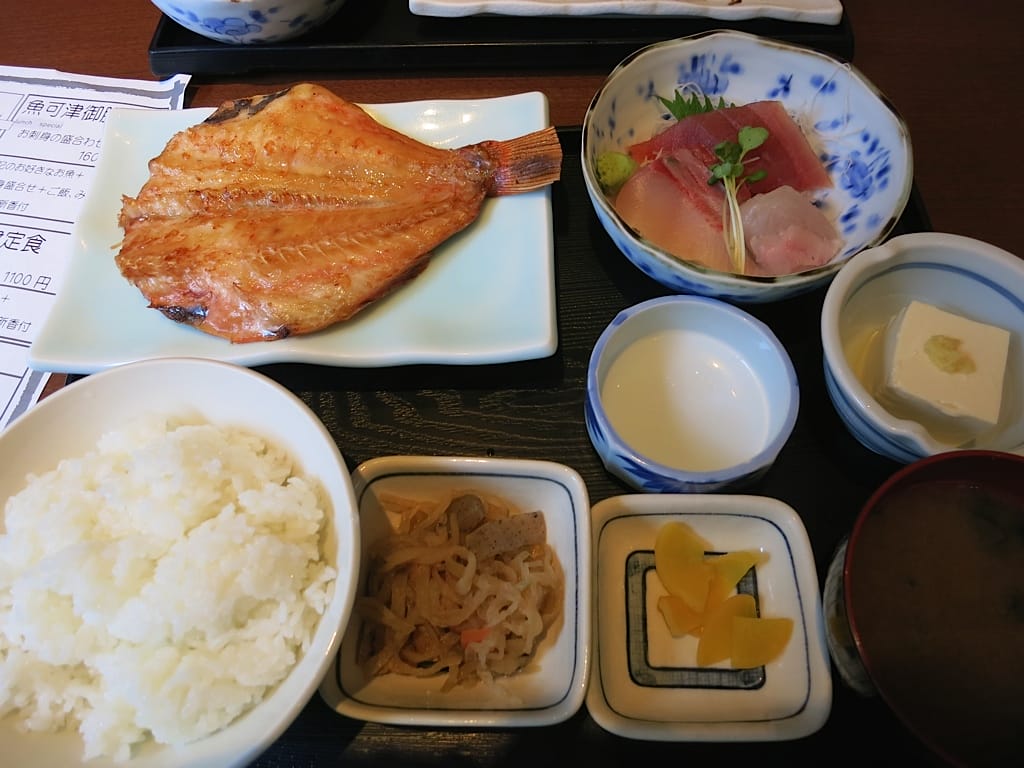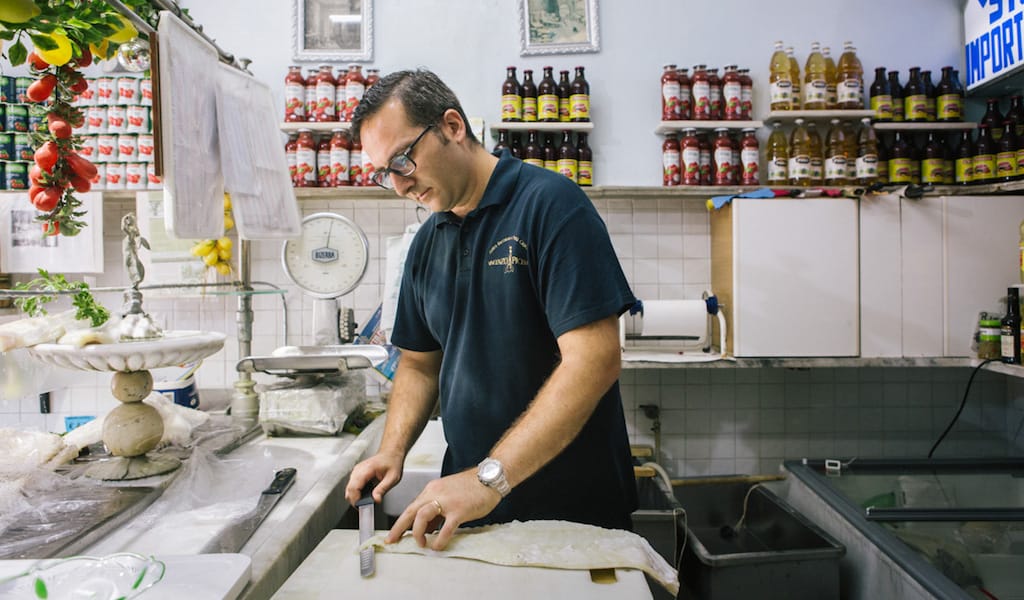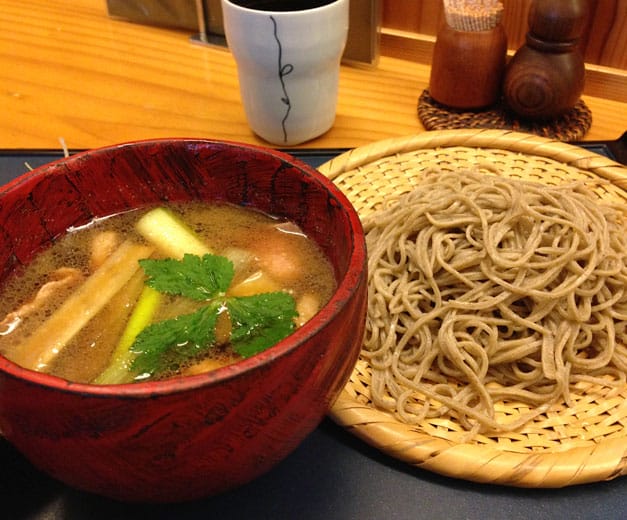Before Roppongi Hills rose from the warren of rambling streets, aging wooden homes and traditional Japanese ways nestled amongst embassies and Korean barbeque joints, Azabu Juban was a sleepy section of Tokyo, moored more in custom than the flashy markets and designer boutiques to come. The main shoten gai, or shopping street, was a classic example of Japanese daily life. Small mom-and-pop stores catered to neighbors, and after the third or fourth visit anyone could be a regular. The vegetable man would disappear into the back of his stand and produce a perfectly ripe melon before you had to ask; the flower vendor waved at her customers even if they weren’t in the market for flowers; and the shoe repair man admonished everyone for not shining their shoes regularly enough.
The local fish store was a wonderland of dazzling seafood. Spectacular tuna was laid out in cases, displayed on trays like jewelry gleaming in the afternoon light. Saffron-colored uni (sea urchin) tucked into wooden boxes arrived daily, flown in from the northern island of Hokkaido, proffered sparingly because of the cost. Yet nothing was exorbitantly expensive because it was a neighborhood store after all.
A large number of local residents were replaced when the Roppongi Hills complex went up. The new population cooked less and preferred to microwave food procured from a neon-lit food supermarket. The local fish market lost a huge chunk of loyal customers, yet the owners proudly wanted to remain in business. The building was mysteriously shrouded for weeks. Then one day Restaurant Uo-Katsu appeared, serving home-cooked-style lunches and dinners. The great loss to locals became a boon to anyone who wanted a quick, healthy seafood meal.
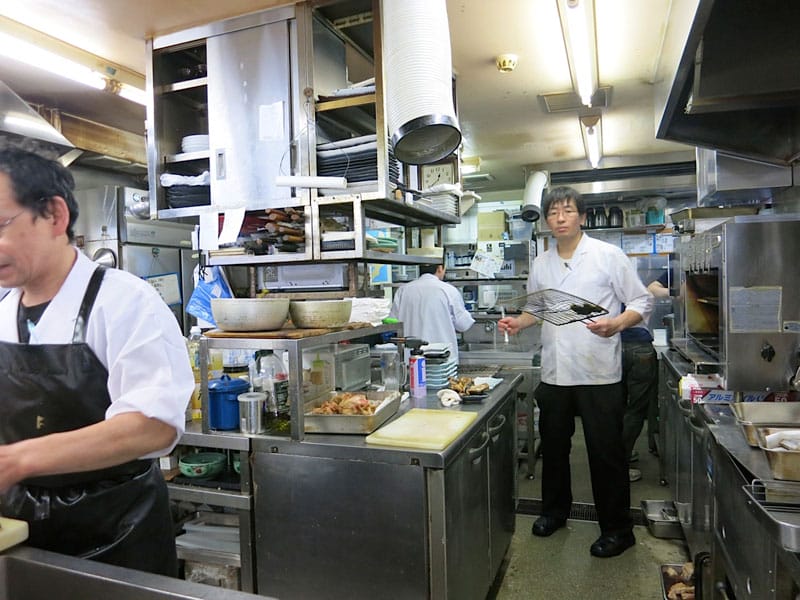
During the day Uo-Katsu serves incredibly well-priced set meals, or teishoku. A teishoku set is usually served on a tray and includes rice, miso soup and pickles surrounding a main dish and sometimes a small side dish. At Uo-Katsu, diners are able to choose from a large variety of fresh fish for the lunch teishoku, costing close to US$10. For an additional $4.50 there is a side of unbelievably fresh sashimi accompanying the meal. The menu changes daily to reflect what the owners were able to procure that morning at Tsukiji market. Because Uo-Katsu has been in business for over 50 years, the owners are Tsukiji insiders and get priority pick of the daily catch. Most days there will be grilled aji (horse mackerel), kamasu (barracuda), tai (sea bream), gindara (black cod), nishin (herring) and shake (fatty salmon belly). Fish head or neck kama boiled in sauce is a Japanese favorite. There is always a teriyaki preparation, often hamachi (amberjack).
At dinner, Uo-Katsu also functions as an izakaya, or tavern-like drinking establishment. Food comes à la carte, although they will prepare a dinner set for $40 per person and up. Otherwise, starters and sides are under $10 and mains are less than $20.
The daily fish can be grilled, boiled or fried depending on the customer’s taste and what fish is available. There are one-pot seafood stews with ingredients like sardines, oysters and fugu (blowfish). Along with the tempura selection there is crispy kakiage, one of Japan’s greatest treats. A kakiage dish is a mashup of julienned ingredients (usually vegetables, seafood, mushrooms) held together by tempura batter and deep-fried into a pyramid of crunchy delights and usually served with rice. At Uo-Katsu the fragrant kakiage is stuffed with the fish of the day or shrimp and is almost enough for a full meal in itself, at under $10. It’s served with grated daikon radish and ginger with a dipping sauce on the side. Add pickles and perhaps a cold tofu to complete the meal.
Other sides are salted squid, steamed clams, Japanese egg custard and sashimi platters. For under $18, diners can choose three kinds of sashimi from a list of around 15 selections or depend on the chef for a more varied selection.
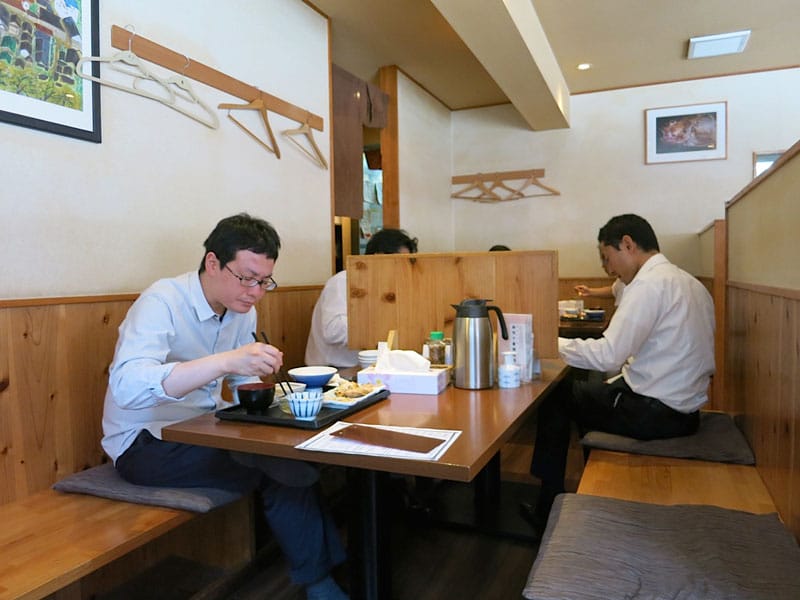
Physically, Uo-Katsu is very, very basic. Entering on the first floor, all diners must pass the kitchen, where an army of chefs are filleting and cutting fresh fish into portions that one will be eating in minutes. The ground floor is a labyrinth of tables placed in such a way that each one has a certain amount of privacy, so that it’s almost like eating at home. The second floor houses tatami mat rooms with a wall of windows looking out onto the main street of Azabu Juban – perfect for watching the world go by on a lazy afternoon.
In doing its best to be a neighborhood izakaya, Uo-Katsu frequently adds “all you can drink” as an $18 option. What the restaurant might lack in ambiance it makes up for in quality and fair prices. We always receive a warm greeting from the staff and feel we’re getting our money’s worth, plus a full stomach – exactly what one wants from a neighborhood eating establishment.
Editor’s note: We regret to report that Uo-Katsu is closed.
 January 18, 2016 Nihonbashi Suminoe
January 18, 2016 Nihonbashi Suminoe
As the towers of Tokyo’s Nihonbashi financial district began to proliferate and grow […] Posted in Tokyo May 25, 2018 Antica Baccaleria Porta Capuana
May 25, 2018 Antica Baccaleria Porta Capuana
“Mamma mia!” exclaims our Californian friend, as he tastes a slice of cod carpaccio for […] Posted in Naples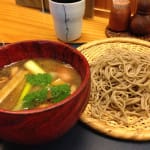 December 14, 2015 Best Bites 2015
December 14, 2015 Best Bites 2015
Editor’s note: As the year comes to a close, we honor some of the people who are keeping […] Posted in Tokyo
Published on September 10, 2015
Related stories
January 18, 2016
TokyoAs the towers of Tokyo’s Nihonbashi financial district began to proliferate and grow taller, developers took special care to preserve and in many cases not displace the area’s mainstream department stores, art galleries and varied restaurants, and so traditional establishments were often incorporated into the new buildings. The Mitsui real estate group, which opened the…
Join our Naples walk to try this delicious stockfish sashimi!
May 25, 2018
Naples“Mamma mia!” exclaims our Californian friend, as he tastes a slice of cod carpaccio for the first time. Better yet, let’s call this dish, made by one of the oldest fish shops in Naples, Norwegian stockfish sashimi. We are in Porta Capuana, and Vincenzo Apicella is carefully slicing dried fish (stockfish is an unsalted fish…
December 14, 2015
TokyoEditor’s note: As the year comes to a close, we honor some of the people who are keeping up traditions on the Japanese food scene. And we remember the foods we’ve dreamt about eating again and again from each of them. Nodaiwa This 200-year-old restaurant, one of Tokyo’s best sources of wild-caught unagi (freshwater eel),…







































